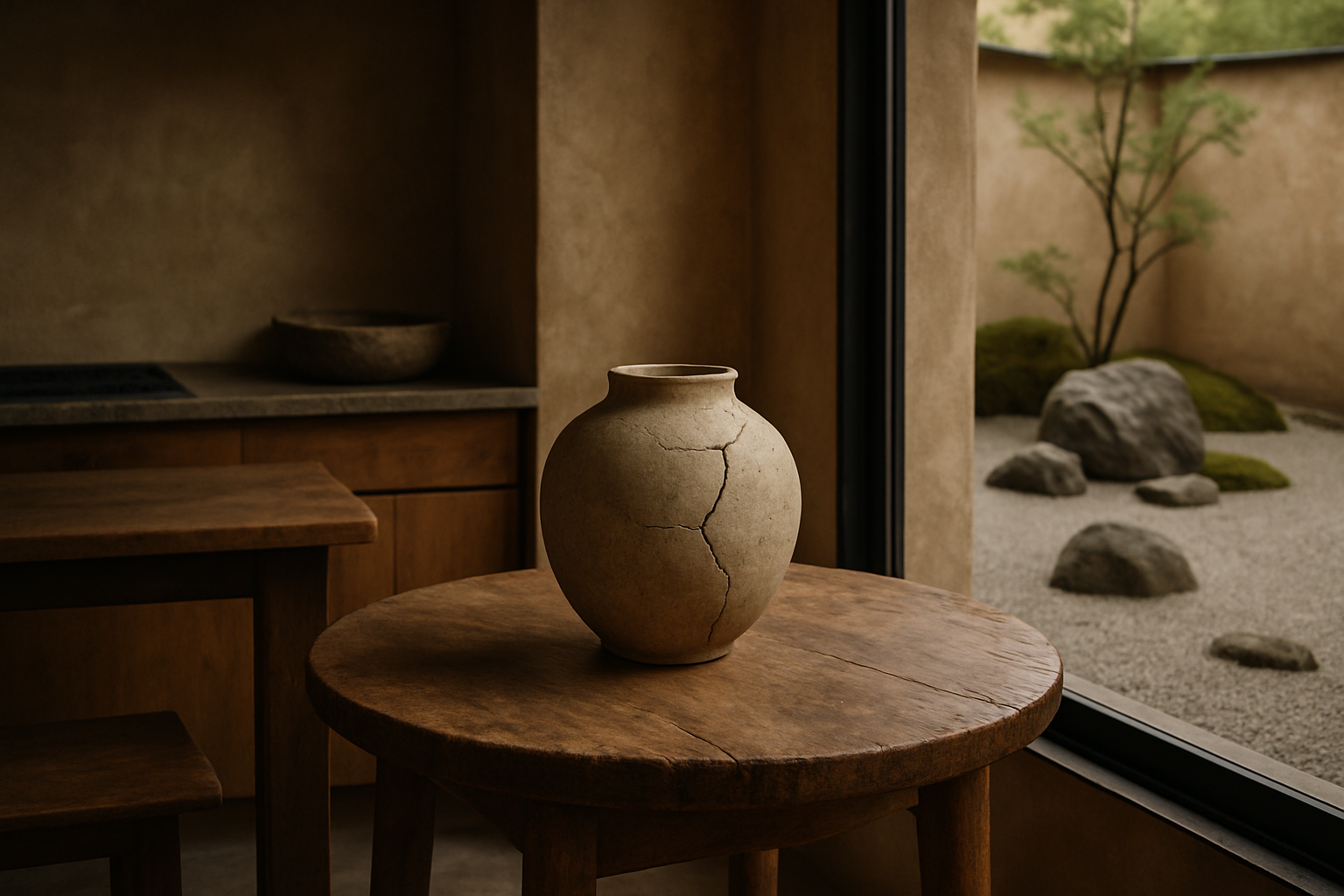Embracing Wabi-Sabi: The Art of Imperfect Beauty in Home Design
In a world obsessed with perfection, a quiet revolution is taking place in home design. Wabi-sabi, an ancient Japanese philosophy that finds beauty in imperfection, is making its way into modern interiors. This aesthetic approach celebrates the charm of worn surfaces, natural materials, and the passage of time. As homeowners seek more authentic and meaningful spaces, wabi-sabi offers a refreshing alternative to the polished and pristine.

The Origins of Wabi-Sabi
Wabi-sabi has its roots in Japanese culture, dating back to the 15th century. Initially linked to the Japanese tea ceremony, it evolved from the Buddhist teaching of the three marks of existence: impermanence, suffering, and emptiness. The term wabi-sabi combines two concepts: wabi, which refers to the beauty of humble and simple things, and sabi, which appreciates the passage of time and the beauty that comes with age.
In traditional Japanese aesthetics, wabi-sabi manifested in rustic tea houses, handmade pottery, and minimalist Zen gardens. These elements were valued not for their perfection, but for their ability to evoke a sense of tranquility and connection to nature. As this philosophy spread beyond Japan, it began to influence various aspects of design, including architecture, furniture, and home decor.
Wabi-Sabi in Modern Home Design
Today, wabi-sabi is experiencing a resurgence in contemporary home design. It offers a counterpoint to the sleek, mass-produced aesthetic that has dominated interiors for decades. Designers and homeowners are embracing wabi-sabi principles to create spaces that feel more authentic, lived-in, and harmonious with nature.
Key elements of wabi-sabi in home design include:
-
Natural materials: Wood, stone, clay, and other organic materials are favored for their inherent imperfections and ability to age gracefully.
-
Muted color palettes: Soft, earthy tones and neutral hues create a calm and grounding atmosphere.
-
Handcrafted items: Artisanal pieces with visible craftsmanship are prized over mass-produced goods.
-
Simplicity: Uncluttered spaces with a focus on essential items reflect the wabi-sabi ethos of less is more.
-
Patina and wear: Instead of hiding signs of age, wabi-sabi celebrates the beauty of weathered surfaces and worn finishes.
Incorporating Wabi-Sabi into Your Home
Embracing wabi-sabi doesn’t mean completely overhauling your space. It’s about shifting your perspective and making thoughtful choices that align with this philosophy. Here are some ways to introduce wabi-sabi elements into your home:
-
Embrace imperfections: Instead of discarding items with minor flaws, learn to appreciate their unique character. A chipped vase or a scratched table can add depth and history to your space.
-
Choose natural textiles: Opt for linen, wool, and cotton in their natural, un-dyed states. These materials age beautifully and develop a lovely patina over time.
-
Bring nature indoors: Incorporate elements from the natural world, such as driftwood, river stones, or dried flowers. These items connect your space to the rhythms of nature.
-
Invest in handmade pieces: Support local artisans by purchasing handcrafted furniture, pottery, or textiles. These unique items bring soul and authenticity to your home.
-
Create negative space: Allow for areas of emptiness in your design. This concept, known as ma in Japanese, creates balance and allows individual elements to shine.
The Benefits of a Wabi-Sabi Home
Adopting wabi-sabi principles in home design offers more than just aesthetic appeal. This philosophy can have a profound impact on our well-being and relationship with our living spaces:
-
Reduced stress: By letting go of the need for perfection, wabi-sabi interiors can create a more relaxed and comfortable environment.
-
Mindfulness: The emphasis on simplicity and appreciation for everyday objects encourages a more mindful approach to living.
-
Sustainability: Wabi-sabi’s focus on longevity and repair aligns with eco-friendly practices, reducing waste and overconsumption.
-
Personal expression: Embracing imperfection allows for more authentic self-expression in home design, creating spaces that truly reflect the inhabitants.
-
Connection to nature: Wabi-sabi’s use of natural materials and organic forms fosters a stronger connection to the natural world.
Challenges and Considerations
While wabi-sabi offers a refreshing approach to home design, it’s not without its challenges. In a culture that often equates newness with value, embracing imperfection can be difficult. It requires a shift in mindset and a willingness to let go of conventional ideas about beauty and perfection.
Additionally, there’s a fine line between wabi-sabi and neglect. The philosophy doesn’t advocate for a lack of care or maintenance but rather an appreciation for the natural aging process. It’s important to distinguish between intentional patina and items that genuinely need repair or replacement.
The Future of Wabi-Sabi in Home Design
As we move towards more sustainable and mindful ways of living, wabi-sabi is likely to gain even more traction in the world of home design. Its principles align well with current trends towards minimalism, eco-consciousness, and the desire for more authentic living spaces.
We may see wabi-sabi influencing not just interior design, but also architecture and product design. Imagine homes built with materials that are intended to age gracefully, or furniture designed to be repaired and cherished for generations.
In a fast-paced world dominated by digital perfection, wabi-sabi offers a much-needed reminder of the beauty in imperfection and the value of slowing down. By embracing this philosophy in our homes, we create spaces that are not just visually appealing, but also nurturing, authentic, and deeply connected to the world around us.
As we continue to navigate the complexities of modern life, the timeless wisdom of wabi-sabi provides a guiding light, showing us how to find beauty in the everyday and create homes that are truly reflective of our human experience.





